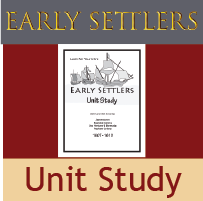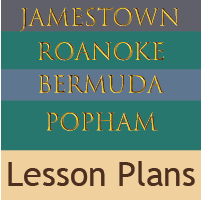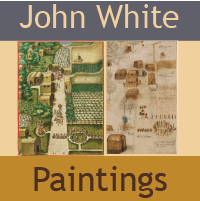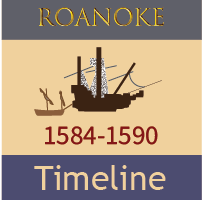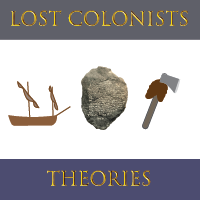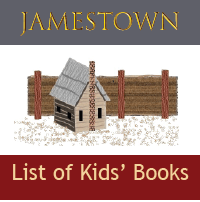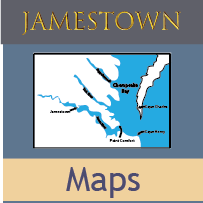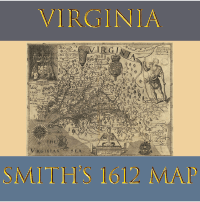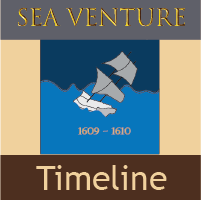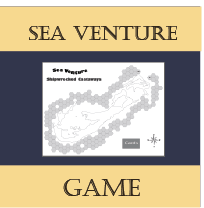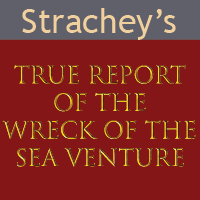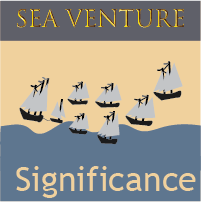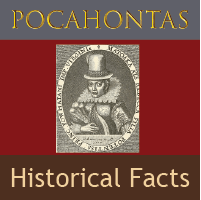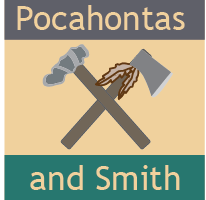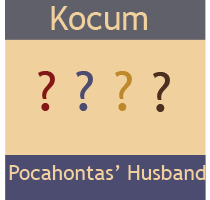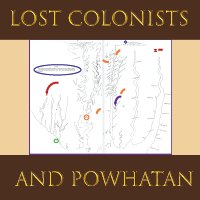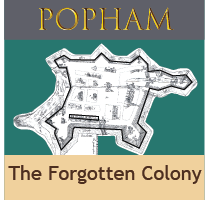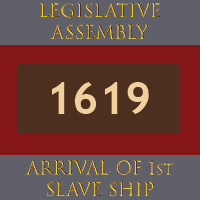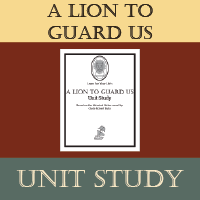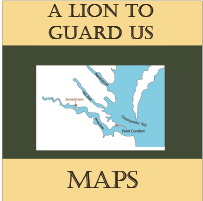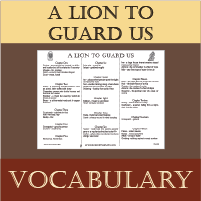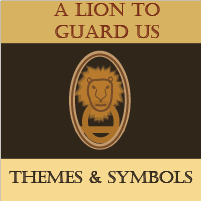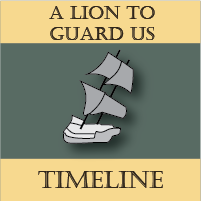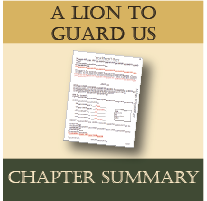Powhatan & The Lost Colony
John Smith reported information on Powhatan and the lost colonists of Roanoke as the 1st Supply departed Jamestown in 1608. Smith's report got King James himself involved.
This was the first theory on the fate of the Lost Colony.
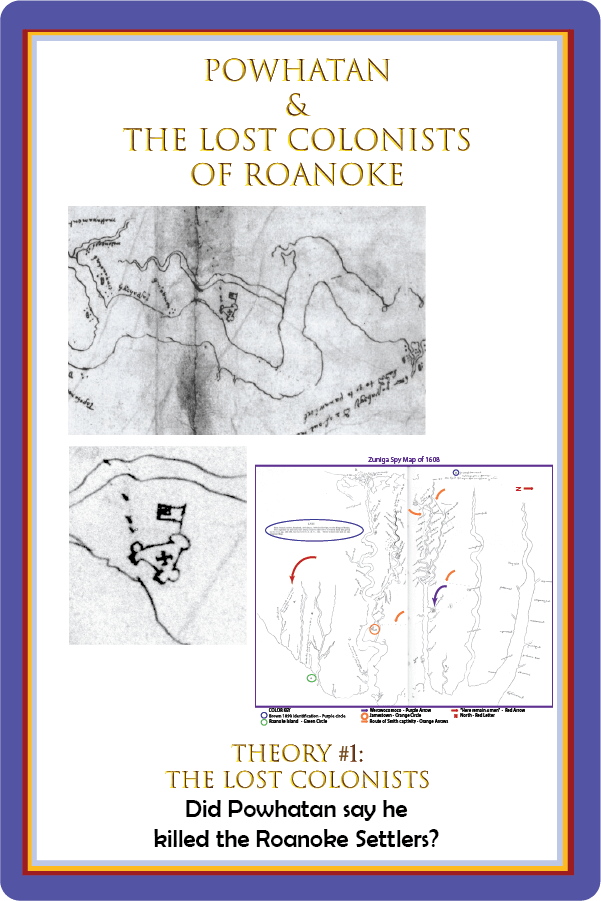
You have read the controversy about the report that Pocohontas rescued Smith from her father. But there is something much more historically significant that occurred during Smith’s captivity. Powhatan told John Smith that he had killed the settlers from Roanoke but some had escaped.
This was the earliest clue about the Lost Colony. It appears that this information was first covered up, then denied, then largely ignored. However, we do have two sources that indicate that the people of Roanoke were attacked, most were killed, and a few survived. Our two sources are John Smith who was told of the slaughter by Powhatan himself and William Strachey, our Sea Venture writer, who was informed by the native Machumps.
This information was largely discounted for over three hundred years. The discovery in 1880's of the Jamestown map in the Spanish archives which was confiscated by the ambassador/spy Zuniga listed the location that Powhatan had stated the survivors would be found.
Keep in mind the evidence of this report is NOT evidence that Powhatan or his warriors actually killed the lost colonists. We do not have the actual words from Powhatan himself, so we really don’t KNOW what happened, or even exactly what he said happened. But it was the first big break-through in finding out what MIGHT have happened to the settlers of Roanoke.
Statements that Powhatan had killed the missing colonists from Roanoke was largely ignored, though later evidence has provided some substantiation to that claim. Indeed, later evidence has substantiated much of Jamestown’s written record that had been questioned.
Again, we do not have evidence or proof of this event. But we have two witnesses relatively close to the event, as well as the fact that the people in Jamestown and in the Virginia Company believed that all but a few had been recently killed. This, as well as other suggestive evidence, allows this to remain one of the strongest theories of the fate of the Roanoke settlers.
Let’s carefully look at the timelines from our two main sources: Captain John Smith and William Strachey.
Captain John Smith’s Report on
Powhatan’s Attack of Roanoke Colonists
Timeline
- April 1607 - Arrival at Jamestown
- Nov. 9, 1607- Smith began the “Discovery of Chikhamania” and capture by Powhatan Indians.
- Jan 12, 1608 - Date of Smith’s release by Powhatan & trial in Jamestown
- Jan 12, 1608 - Arrival of 1st Supply & Newport on John and Frances
- April 20, 1608 - Arrival of the other ship of the 1st Supply: Phoenix (The two ships were separated at sea by a storm.)
- June 7, 1608 - Phoenix departed with Smith’s “True Report” onboard as well as the draft of his Map of Virginia
- Sept 10, 1608 - Spanish Ambassador Zuniga in London obtained a copy of Smith’s map and sent it to King Philip of Spain
- Oct. 1, 1608 - Arrival of 2nd Supply & Newport on the Mary Margaret with instructions to find Roanoke
- Dec 1608 - edited version of “True Report” published in England without mention of Roanoke
Smith's Report
Smith’s conversation with Chief Powhatan in all liklihood included the massacre of the Roanoke settlers. Most of this conversation was deleted when Smith’s original account was published. The Virginia Company had a strict moratorium against any information that would discourage new settlers joining the colony. All letters to home were to be sent through officials who would read them before allowing them on the ship; simply handing a letter to a sailor was illegal. However, the one sentence about Roanoke that escaped the censors in Smith’s 1608 “True Relation” is this: “He described a country called Anone where they have abundance of brass and houses walled as ours.” That sentence has no key words that attracted the censors’ pen from striking them out, but they give a significant key to what else was said.His “True Relation” was actually a report written as a letter that was sent to England June 1608 on the return trip of the 1st Supply. The very next ship was the 2nd Supply which arrived in October. Newport brought instructions with the 2nd Supply that the Jamestowners were to travel four days south to a place called “Ocanahonone” where they would find:
Original
“two of the best rivers will supply you. Besides you are near to rich copper mines of Ritanoe, and may pass them by one branch of this river, and by another branch Peccarecamicke where you shall find four of the English alive left by Sir Walter Raweley, which escaped from the slaughter of Powhaton of Roanocke, upon the first arrival of our colony, and live under the protection of a wiroane called Gepanocon, enemy to Powhaton, by whose consent you shall never recover them.” (“True Report” in Haile, pg 23-24)
Modernized Language
“two of the best rivers to supply you. Besides you are near to rich copper mines of Ritanoe, and may pass them by one branch of this river, and by another branch Peccarecamicke. At this river you shall find alive four of the English of Roanoke left by Sir Walter Raleigh who escaped from the slaughter of Powhaton at the first arrival of our colony (to Jamestown in 1607). They now live under the protection of a werowance called Gepanocon, enemy to Powhaton, by whose permission you shall never recover them.” (Language and spelling modernized, from “True Report” in Haile, pg 23-24)
Since the Jamestowners came with detailed instructions on their initial arrival in 1607, and they had no such instructions to look for the Roanoke survivors, their only source of information would have been the return of the 1st Supply back to England. Its return cargo included Smith’s "True Relation" and his hand-drawn draft of the map.There was no other source for this information.
Zuniga Spy Map of Jamestown and Virginia
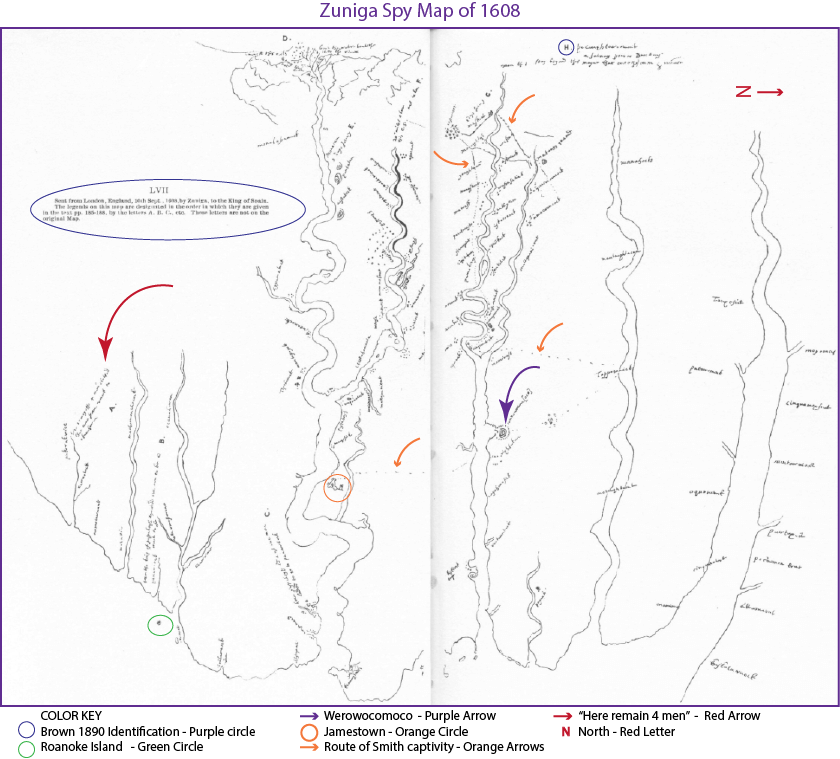
1608 Zuniga Map, Reprinted 1890 by Brown (Houghton Mifflin Company)
Colored markings added by this site.
(See References below for full credit and recommended further reading.)
But in the 1880’s the historian Alexander Brown went to Spain looking for information for his book, “The Genesis of the United States.” Spain and England had long ago settled their differences between King Philip and Queen Elizabeth. And besides, the United States had separated from England after the Revolutionary War one hundred years before. The Spanish had no reason to hide their information from Mr. Brown.
There in the Spanish archives Brown found the Zuniga Spy Map. (This map of Jamestown had a diagram of the fort that ended up being accurate when archaeologists found the site of the original fort in 2012.)
Two other interesting things were found on this Zuniga map. One, dotted lines show the route that Smith was taken during his captivity. The small orange arrows on the map above indicate those lines.
Second, these words are written: “here remayne the 4 men clothed that came from Roonock to Okanahowan.” (spelling original, Haile 152) The large red arrow points to those words which are along the river south of Roanoke Island.
These handwritten words on the Zuniga Map reflect the instructions from the Virginia Company to go to “Ocanahoen” to find “four of the English alive left by Sir Walter Raweley.”
Student Activity
At an earlier lesson in the unit study students engaged in map activities with:- The Zuniga Map of the Jamestown Fort
- 1612 Virginia Map
- Modern satellite maps for comparison
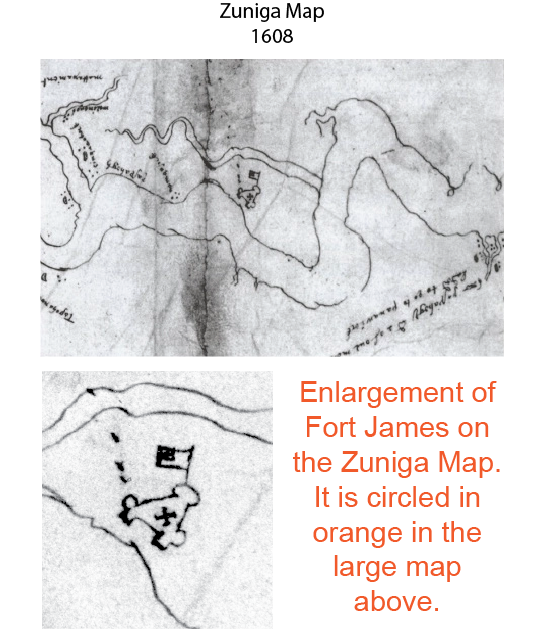
William Strachey's Report on the Lost Colonists
Timeline of Strachey & Machumps
Students compare this timeline with the larger Jamestown and Sea Venture timeline.- April 10, 1608 - Machumps and Namontack left with Captain Newport when the 2nd Supply left Jamestown
- June 1608 to June 1609 - Machumps and Namontack in London; Strachey met with them while developing his dictionary of Powhatan words.
- June 1609 to May 1610 - Machumps, Namontack, & Strachey onboard the Sea Venture, shipwreck in the Bermudas
- May 23, 1610 - Machumps and Strachey arrive in Jamestown, Machumps returned to his village
- Sept 1611 - Strachey returned to England
- 1613 to 1619 - Strachey wrote “The History of Travel of Virginia Britannia”
Original
This high land is in all likelihoods a pleasant tract and the mould fruitful, especially what may lie to the so'ward, where at Peccarecanick and Ocahnahoen, by the relation of Machumps, the people have houses built with stone walls and one story above another - so taught them by those English who escaped the slaughter at Roanoack at what time this our colony under the conduct of Captain Newport landed within the Chesapeack Bay - and where the people breed up tame turkeys about their houses and take apes in the moutanins and where at Ritanoe the weroane Eyanoco preserved 7 of the gnlish alive - four men, two boys, and one young maid, who escaped and fled up the River of Chaonoke - to beat his copper, of which he hath certain ines at the said Ritanoe, as also at Pannacwaick are said to be store of salt stones. from “History of Travel, Chapter 1” from Haile, pg 597)
Modernized Language
This high land is a pleasant tract and the mount fruitful, especially the land to the south, where at Peccarecamicke and Ochanahoen, by the relation of Machumps, the people have houses built with stone walls and one story above another - so taught them by those English who escaped the slaughter at Roanoke that happened when our colony landed at the Chesapeack Bay under Captain Newport. There the people breed tame turkeys about their houses and take apes in the mountains and there at Ritanoe the werowance Eyanoco preserved 7 of the English alive - four men, two boys and one young maid, who escaped and fled up the River of Chaonoke. He has them beat his copper at his mines at Ritanoe, and there are also said to be stores of salt stones at Pannawaick. (Language and spelling modernized, from “History of Travel, Chapter 1”)
Student Activity
Students compare the two accounts (Smith/Powhatan and Strachey/Machumps) for:- Information that is the same or close
- Information that differs in the two accounts
- Additional information from only one source
- Consider if this information is coming from one or two different sources
Additional Original Quotes from Strachey
Three additional quotes about the attack on the missing colonists are provided by Strachey in the unit study.Chapter 3: Involvement of Priests
...(Powhatan) often sends to temporize with us, awaiting perhaps a fit opportunity, inflamed by his furious and bloody priests to offer us a taste of the same cup which he made our poor countrymen of Roanoke drink of
(Language and spelling modernized, from “History of Travel, Chapter 3” from Haile, pg 616)
Chapter 3: Involvement of Priests
...(Powhatan) often sends to temporize with us, awaiting perhaps a fit opportunity, inflamed by his furious and bloody priests to offer us a taste of the same cup which he made our poor countrymen of Roanoke drink of
(Language and spelling modernized, from “History of Travel, Chapter 3” from Haile, pg 616)
Chapter 7: King James' Response
(we will) make the common natives understand that His Majesty, King James of England, has been told that the men, women, and children of the first plantation at Roanoke were miserably slaughtered by the command of Powhatan (who had been himself persuaded by his priests) without any offense given him by those who first planted more than 20 years ago and had peaceably lived with and intermixed with those natives who were out of his territory...Because His Majesty is the most just and the most merciful prince in all the world, he has given an order that Powhatan himself and his weroances and all the people shall be spared and revenge will only be taken upon his quiyoughquisocks by whose advice and persuasions was exercised that bloody cruelty.
(Language and spelling modernized, from “History of Travel, Chapter 7” from Haile, pg 648.)
Chapter 8: Outside of Powhatan Territory
Powhatan has slaughtered so many of our nation without offense given to him and by those who were far from him, and in the territory of those werowances who did not depend on him or acknowledge him. But it has been Powhatan’s great care to keep us by any means from the acquaintance of those nations that border and confront him. (Language and spelling modernized, from “History of Travel, Chapter 8” from Haile, pg 664.)
Theory of Powhatan's Attack on Roanoke Settlers
The settlers of Jamestown were the first to give us information on what might have happened to the Lost Colony of Roanoke. Clearly they all believed Powhatan had them killed and only a few escaped.Several times Jamestown settlers attempted to travel south to find them but were unsuccessful. Once they even reported seeing the Maltese Cross carved into trees. This was the sign of distress Governor John White had told the settlers to leave if they were in danger! Could that have been a clue from the missing colony?
While some might think the information above settles the fate of the colonists, all we have is second-hand information. In a court of law, this would be considered “hear-say.” ("I heard somebody else say that person killed somebody," is not acceptable evidence.)
We do not have the actual statements of either Powhatan or Machumps. Therefore it’s a rumor.
Nonetheless, it was a persistent rumor. Should we believe it?
Much of the Jamestown record was repudiated by later historians, only to be substantiated by time as new records and archaeological artifacts surfaced. This might be another issue that is proven or disproven with time.
Student Activity
Debate these questions about the statements and this theory:- Could Smith & Strachey have thought Powhatan meant the Roanoke colonists, but he actually meant the 15 men left by Grenville in 1586 who were attacked by natives?
- Is it possible that Powhatan might have claimed to have killed them, but he hadn’t? Why might he do that?
- Assume Powhatan’s report is true that his warriors killed the colonists. What information are we still missing?
- Does the Maltese Cross carved on trees prove the Roanoke colonists had been nearby? Is it significant?
References
Below are the original resources. Most can be found online as well as purchased from a variety of publishers. (These are public domain; written long before copyright laws.)A single print source for these and other Jamestown documents is:
- Haile, Edward Wright, Jamestown Narratives: Eyewitness Accounts of the Virginia Colony (1998)
Online sources: links to online sources are included below. Like much of the internet, these are subject to change. These links are not live as broken links are bad for our site. They can be copied and pasted and put in your search bar. Alternatively, copy and paste the title of the book.
Sources for the Zuniga Map
Brown, Alexander. Genesis of the United States. Houghton Mifflin 1890Map reproduced between pages 184 and 185
https://books.google.com/books/about/The_Genesis_of_the_United_States.html?id=zUkOAAAAIAAJ
Brown discovered the handwritten map in the Spanish Archives when researching the Jamestown history and deserves significant credit for its publication. It was #57 in his text. The Roman letters were added by his publisher. His main identifier is in the purple circle on the map above which states: "Sent from London England 10Sept1608 by Zuniga to the King of Spain. The legend on this map are designated in the order in which they are given in the text pp 185-188 by the letters A,B,C etc. These letters are not on the original map."
Encyclopedia Virginia, Contributor Cassandra Britt Farrell.
Article: Zuniga Chart
https://encyclopediavirginia.org/entries/zuniga-chart/
accessed 2/27/24. This is our actual source for the map in the picture above.
Information is given about the map and its history. They identify the original map as 75 x 56 cm (29 x 22 inches.)
Edward, Wright Haile. Jamestown Narratives: Eyewitness Accounts of the Virginia Colony The First Decade. 1998
https://www.captainjohnsmith.org/new-page-80
***This is the best interpretation of the Zuniga map available. Haile provides the identification of over 100 villages and annotations on the map that are extrememly difficult to read in the original.
Jamestown Rediscovery. Zuniga Map of James Fort.
https://historicjamestowne.org/history/history-of-jamestown/zuniga-map-of-james-fort-2/
accessed 2/12/24
Article and one minute video on the use of the diagram on the Zuniga map
She-Philosophy.com "The Zuniga Chart of Virginia"
https://www.she-philosopher.com/gallery/1608Zuniga.html
An indepth analysis comparing the Venasco Map, Zuniga Map, and Smith 1612 Map and theories about the creation and distribution of them.
Written Sources
Smith: True Relation of such Occurrences and Accidents of Note as hath hap'ned in Virginia (1608)http://www.virtualjamestown.org/exist/cocoon/jamestown/fha/J1007
Smith: The General History of Virginia, New England, and Somer Islands (1624)
https://www.gutenberg.org/files/56347/56347-h/56347-h.htm
Strachey: The Historie of Travaile into Virginia Britannia: The 1st Book of the 1st Decade (1618)
https://archive.org/details/historietravail00majogoog
Get the Early Settlers Unit Study
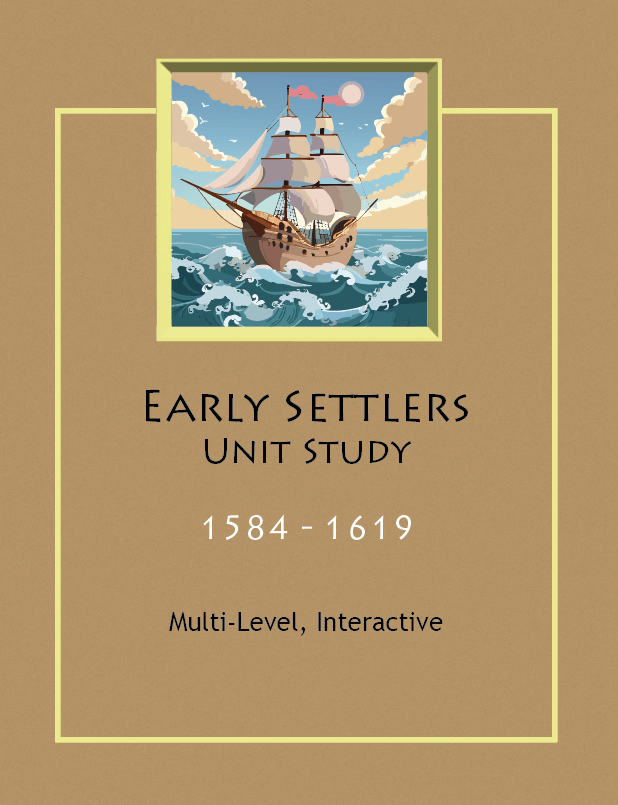
Available in Paperback OR Printable Download
199 pages (Includes Student Pages, Teacher Key, Schedule, Maps, Activities, and More)
Print It Now
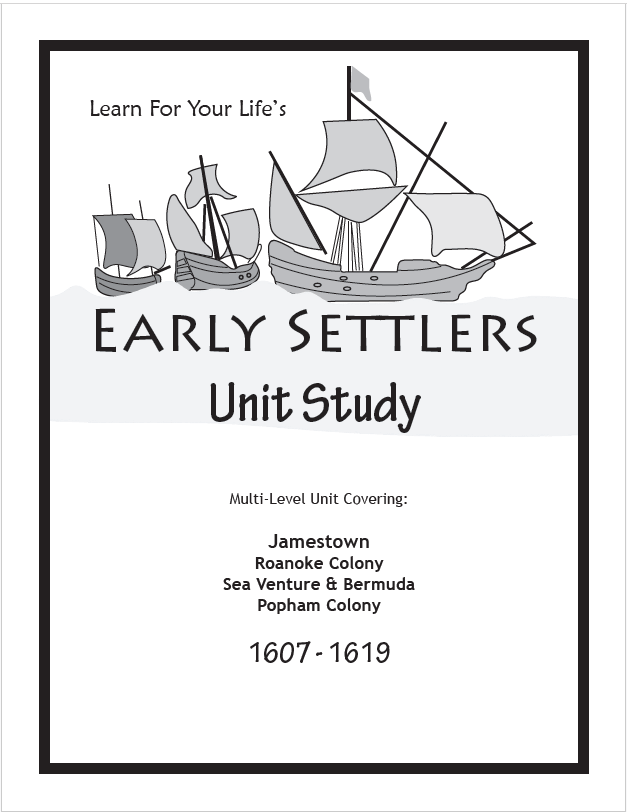
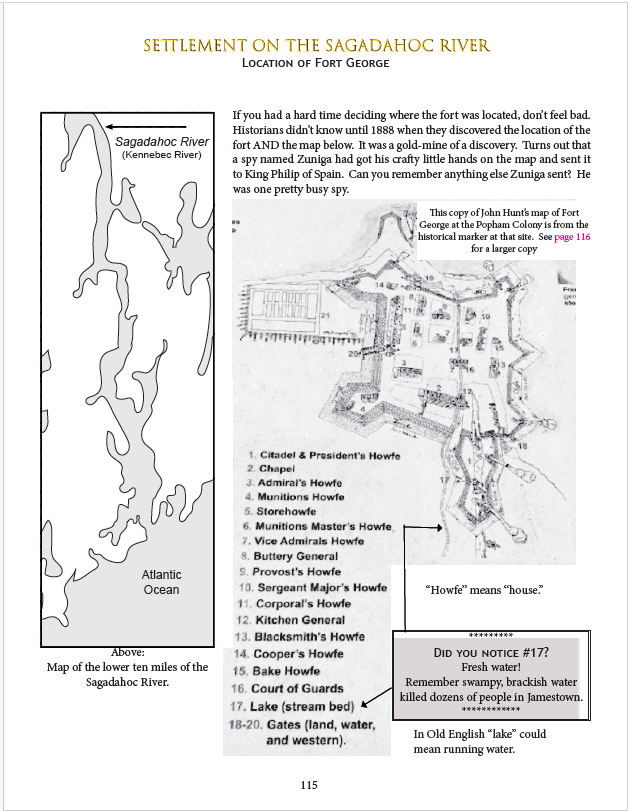
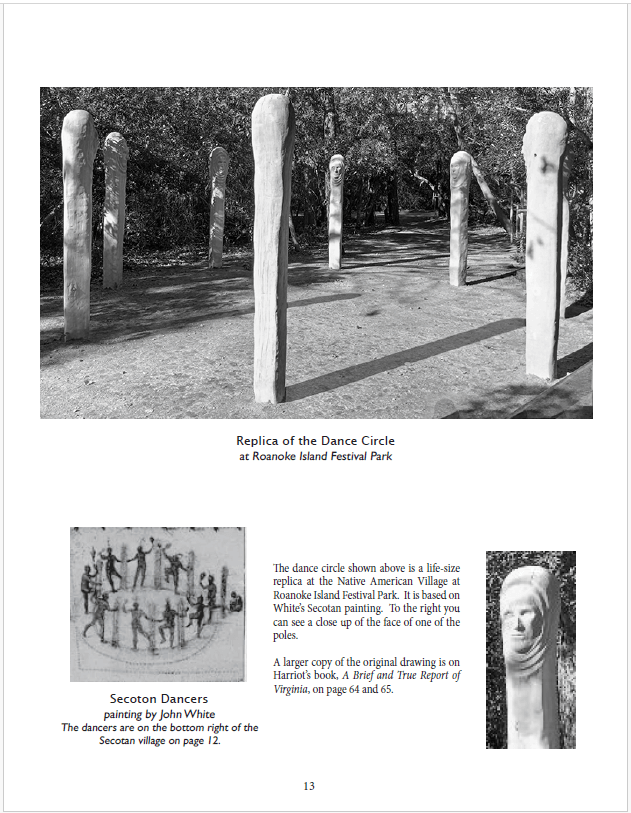
Student and Teacher's Material Included
$5.99 Download - 199 pages
![]()
Softcover Edition - Mailed to You
The same pages are in the softcover book and the printable file. Bound copy is great for repeat use or co-op leaders.
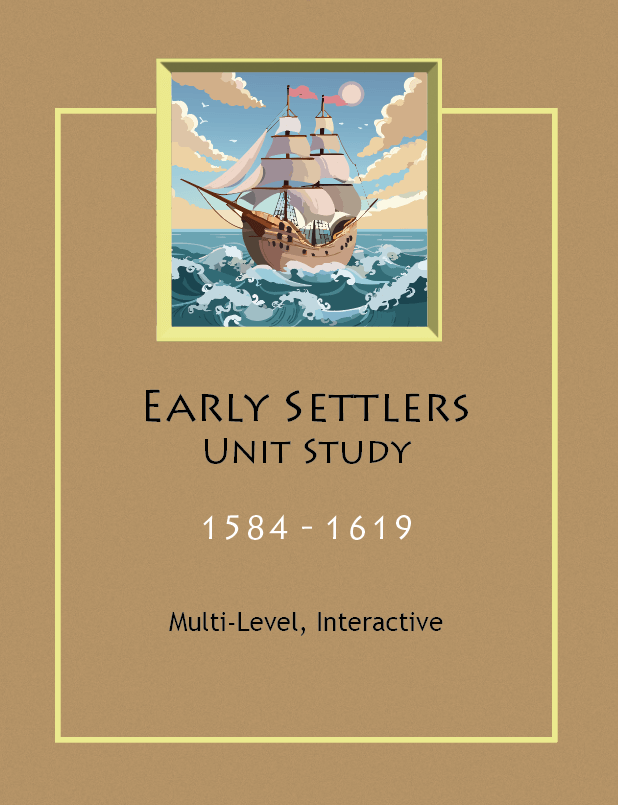
![]()
16.95 Soft Cover Manual
199 pages
Mailed to You
Early Settlers Pages
Check out our other pages for the Early Settlers Unit Study
Get the Lion To Guard Us Unit Study
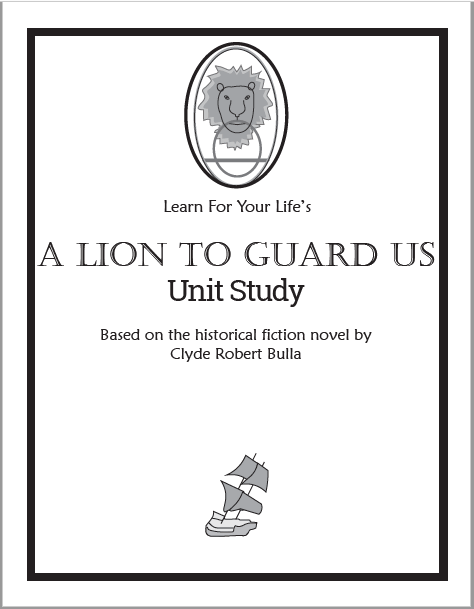
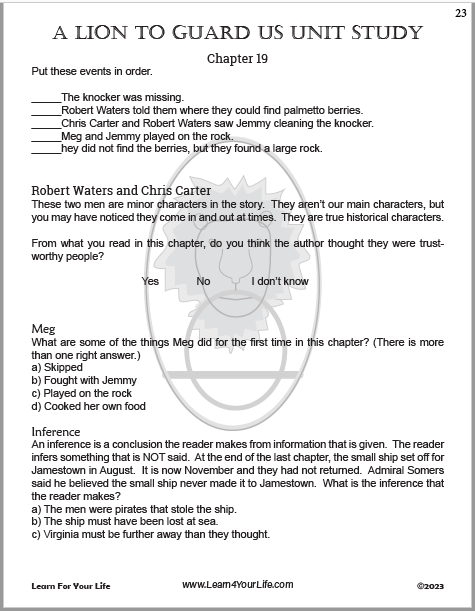
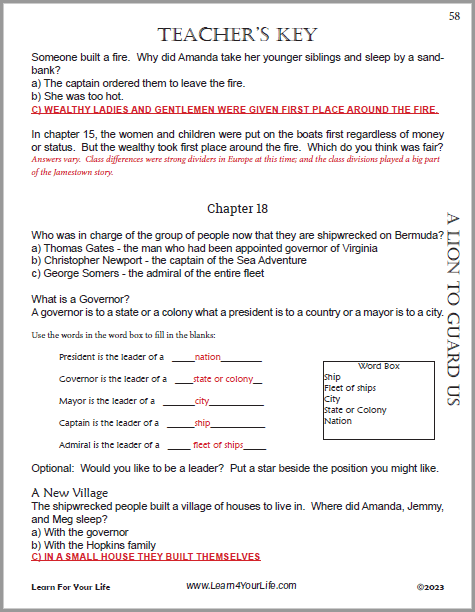
Student Guide AND Teacher's Answer Key Included
$2.99 Download - 78 pages
![]()
Our pages for A Lion To Guard Us
Clyde Bulla's Historical Fiction of Jamestown & the Sea Venture

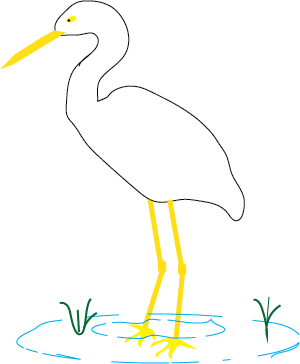
About Our Site
Hands-On Learning


